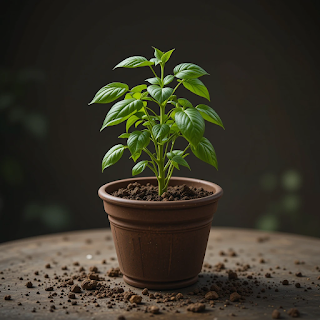The Complete Guide to Growing Lettuce at Home
Growing your own lettuce is one of the most rewarding kitchen garden experiences. Fresh, crisp lettuce harvested moments before eating offers flavor that store-bought varieties simply can't match. As a fast-growing, cool-season crop, lettuce is perfect for beginners and experienced gardeners alike. This guide covers everything you need to know to grow abundant, delicious lettuce at home.
Basic Growing Requirements
Spacing
- Seed spacing: Sow seeds 1 inch apart in rows
- Seedling spacing after thinning:
- Leaf lettuce: 4-6 inches apart
- Romaine/Cos: 6-8 inches apart
- Butterhead: 6-8 inches apart
- Crisphead/Iceberg: 10-12 inches apart
- Row spacing: 12-18 inches between rows
Light Requirements
- Lettuce prefers partial sun to partial shade
- 4-6 hours of direct sunlight is ideal
- In hot climates, afternoon shade is beneficial
- Too much direct sunlight in hot weather can cause bolting (premature flowering)
Temperature Preferences
- Optimal soil temperature for germination: 60-70°F (15-21°C)
- Growing temperature range: 45-75°F (7-24°C)
- Ideal growing temperature: 60-65°F (15-18°C)
- Lettuce is frost-tolerant but will be damaged by hard freezes
Days to Germination
- 2-8 days under optimal conditions
- Generally emerges within 7 days at 68°F (20°C)
- Germination slows at cooler temperatures
- May not germinate well above 75°F (24°C)
Soil Preparation and Planting
Soil Requirements
- Well-draining, loamy soil rich in organic matter
- pH range: 6.0-7.0 (slightly acidic to neutral)
- Add compost or well-rotted manure before planting
Planting Times
- Spring: 2-4 weeks before the last frost date
- Fall: 4-8 weeks before the first frost date
- Year-round: In mild climates or with protection
- For continuous harvest, sow small amounts every 7-10 days
Planting Depth
- Sow seeds very shallow, approximately ¼ inch deep
- Lettuce seeds need light to germinate
- Gently press into soil rather than burying deeply
Care During Growth
Watering
- Keep soil consistently moist but not waterlogged
- Water gently to avoid displacing seeds or damaging young plants
- Water in the morning to reduce disease risk
- Approximately 1-1.5 inches of water per week
Fertilizing
- Light feeder - doesn't require heavy fertilization
- Apply balanced, all-purpose organic fertilizer before planting
- Side dress with compost tea or diluted liquid fertilizer every 3-4 weeks
Mulching
- Apply a light layer of organic mulch to:
- Retain soil moisture
- Suppress weeds
- Keep soil cool in warm weather
- Keep leaves clean from soil splash
Common Problems
Pests
- Aphids
- Slugs and snails
- Cutworms
- Flea beetles
- Rabbits and other wildlife
Diseases
- Downy mildew
- Powdery mildew
- Bottom rot
- Lettuce mosaic virus
Environmental Issues
- Bolting (premature flowering due to heat or long days)
- Tip burn (caused by calcium deficiency or irregular watering)
- Bitterness (usually from heat stress or age)
Harvesting
When to Harvest
- Baby greens: 3-4 weeks after planting
- Full-sized leaf lettuce: 45-60 days after planting
- Head lettuce varieties: 60-90 days after planting
Harvesting Methods
- Cut-and-come-again method: Harvest outer leaves as needed, allowing center to continue growing
- Whole plant harvest: Cut entire plant at soil level
- Harvest in the morning for best flavor and crispness
Growing in Containers
- Choose containers at least 6 inches deep with drainage holes
- Use high-quality potting mix designed for vegetables
- Space plants more closely than in-ground (about 4 inches apart)
- Water more frequently as containers dry out faster
- Consider heat-resistant varieties for container growing
Season Extension
- Use row covers for frost protection in early spring and late fall
- Consider cold frames or small hoop houses for winter growing
- Select heat-resistant varieties for summer production
- Provide afternoon shade during hot weather
Recommended Varieties
For Heat Resistance
- Jericho
- Summer Crisp types (Nevada, Muir)
- Black Seeded Simpson
For Cold Tolerance
- Winter Density
- Arctic King
- Rouge d'Hiver
For Container Growing
- Tom Thumb
- Little Gem
- Any leaf lettuce mix
Final Tips for Success
- Succession plant every 10-14 days for continuous harvest
- Interplant with slower-growing vegetables to maximize space
- Harvest regularly to encourage continued production
- Plant in areas with good air circulation to reduce disease
- Consider growing microgreens indoors year-round for quick harvests
Happy growing!













































.jpg)


